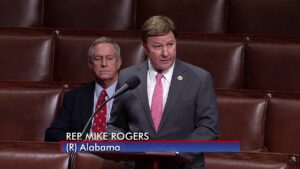
The new leader of the House Armed Services Committee on Thursday said he’s planning for a “very aggressive schedule” of briefings and hearings with an aim to markup the next version of the National Defense Authorization Act (NDAA) this spring. Rep. Mike Rogers (R-Ala.), the new HASC chair, said a focus of the FY ‘24 NDAA will be finding cost savings at the Pentagon, to include examining cuts to capabilities that may not be required for future threats. “As we…

 By
By 











